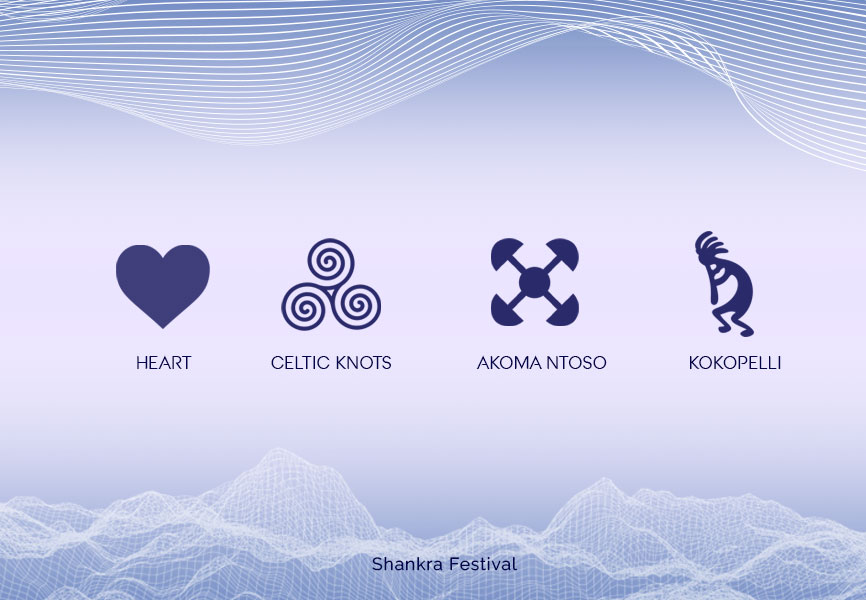Cultura
As humans, the moment we started to represent visually the world around us, we transformed images we see in representations, which in some cases became symbols.
A representation illustrates reality, while a symbol has the power of transmitting an idea through a simple, sometimes abstract, image. Even if we don’t speak the same language, symbols can help us to communicate directly, when shared between cultures.
Some symbols are universal and archetypal, shaped by what Carl G. Jung defined the collective unconscious, a level of consciousness that all people have in common, carried over from our earliest ancestors, while others are unique to certain cultures, bearing an history that can be discovered only exploring the local traditions.
What are the different symbols of love in cultures around the world? Love is one of the universal emotions that people experience, being love for a partner, love for family, love for Nature or love for something that makes us feel good. Let’s explore some visual representations of this complex and beautiful feeling.
HEART
Recognized universally as symbol for love and affection, the heart shape has foggy origins. Some theories explain that this shape could be derived from the shape of ivy leaves, which in ancient times was connected with the idea of loyalty and eternal love by Romans and Greeks: marrying couples were given wreaths of ivy, instead of roses. This ancient plant, in fact, can live for up to 450 years, with its vines becoming firmly and permanently rooted in their soil. An alternative theory shows a more straight-forward approach: the philosopher Aristotle, in his writings of Galen, described the human heart as having three chambers with a small dent in the middle. In the Middle Ages, many artists attempted to draw representations of ancient medical texts, resembling the one described by Aristotle: the heart shapes became similar to what we are used to see, acquiring the meaning of affection and romance during the Renaissance.
CELTIC KNOTS
The origins of Celtic knots is believed to be dated right back to 500 B.C, with proven evidence that knot designs were used as early as the third century A.D. How were they born? A fascinating theory relates the birth of knots with pre-Christian Celtic religious prohibition of visually represent living creatures, similar to Islam, which may have given birth to these designs, in a similar process as Arabic calligraphy. In these knots, the lines have no start or finish, resulting into complete loops that represent loyalty and love. The only thread represented symbolizes the intertwining of life and eternity, in a continuous movement.
AKOMA NTOSO
The most typical representations of love usually refers to romance. However, love can be expressed and practiced through the life of the community we are part of. This Ghanaian adinkra symbol embodies this concept: it literally translates "linked hearts" and represents four hearts linked together. It transmit the idea of understanding and agreement, as well as harmony within communities, mutual sympathy and immortality of the soul.
KOKOPELLI
Love for music, love for traveling, love for parenting and love for stories: this intriguing symbol holds all of these facets of love. Kokopelli, surviving from ancient Anasazi Indian mythology, is a well-known symbol who is venerated by some Native American cultures in the Southwestern United States. It is a prominent character in the legends of the Hopi tribe, representing a mischievous trickster or the Minstrel, spirit of music. Kokopelli is a deity of fertility, bringing well-being to people, food and new life. It is often present in marriages rituals, sometimes depicted with his consort Kokopelmimi. It is connected with the passion for music and storytelling: its origin could be the representations of travelers, storytellers and traders from ancient times, linking distant and diverse communities together.
Love is a powerful emotion that can be observed in every element of reality, if we choose to see it. It can bring us closer together to our community, and bring us closer to our own self. Love gives us a chance to free our own selves.
Open call for submissions:
If writing is your passion and you wish to share your knowledge with our community, send us your feature topic articles by mail to info@shankrafestival.org with the subject “Article Collaboration”


